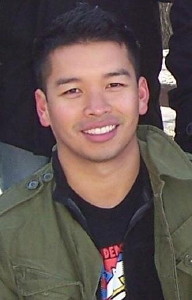Kalaya'an Mendoza And Putting A New Lens On Poverty

What sparked your interest in Amnesty International?
I got involved with Amnesty International in high school. My interest was peaked because of my family’s involvement in the People Power Uprising in the late ‘80s. I’ve always kind of been an activist. Even back in middle school, I was always involved in some kind of community organizing. Amnesty seemed like the perfect venue to get more involved locally, nationally, and globally.
How do you think that human dignity has evolved in this digital age?
With the vast adoption of social media, I think that it has given people the chance to share their stories, their experiences, and to report what’s happening on the ground. I think that the digital tools that have been awarded to organizers of communities have really helped to empower them with what they need to broadcast and advertise their causes so they come directly to the people.
Do you think that there are any issues with the Internet? Does it pose problems or is it just a positive tool?
I think it can go both ways. Governments are able to turn off the Internet and just like we’ve seen in Iran and China, governments have the ability to shut down what is broadcast and what is spread. It’s a violation of people’s basic human rights to freedom of expression.
What for you is the biggest abuse in human rights today?
I think that one people can agree with across the board is that poverty has not been necessarily looked at from a human rights lens. That’s one thing that Amnesty has been amping up in terms of our work in economic, cultural, and social rights. I think if people see poverty as human rights issue, they are more likely to intertwine the issues instead of making them two separate issues.
I know that Amnesty does a lot with writing letters. How does that contribute to a specific cause?
Our letter writing is the foundation of Amnesty’s work. One of our former prisoners of conscious, Ngawang Sangdrol, is a Tibetan Nun that was arrested by the Chinese government for doing nothing more than peaceful protesting for human rights in her country. One of the stories that she told was that whenever a letter was written to the Chinese government, they would give her more food. The Chinese government knew that the world was watching, so they started to treat her with some dignity, and eventually, just because of this pressure, they released her.
What can women do individually to take steps toward gender equality?
Just getting involved with local organizations that work on women’s rights. The difference is also their background. A woman at a university could tap into various organizations, like Take Back The Night. This organization pledges to make campuses safer for women.
Why do you think it’s important for youth to get involved in Amnesty International?
It’s important for the youth to recognize that they have power! If you look at different social movements, youth have led the way! They have the time, and the resources. It’s important that they know that they have the ability to affect change on a local, and global level.
What has been your greatest success in working with this organization?
I was part of organizing the “Shine the Light on Human Rights” Award for His Holiness the Dalai Lama. He’s always been a personal hero to me, and obviously someone very important to the Tibetan community. Being able to be part of that process has definitely been one of my biggest professional accomplishments.
You can reach reporter Anita Dukart here.
Best way to find more great content from Neon Tommy?
Or join our email list below to enjoy the weekly Neon Tommy News Highlights.



